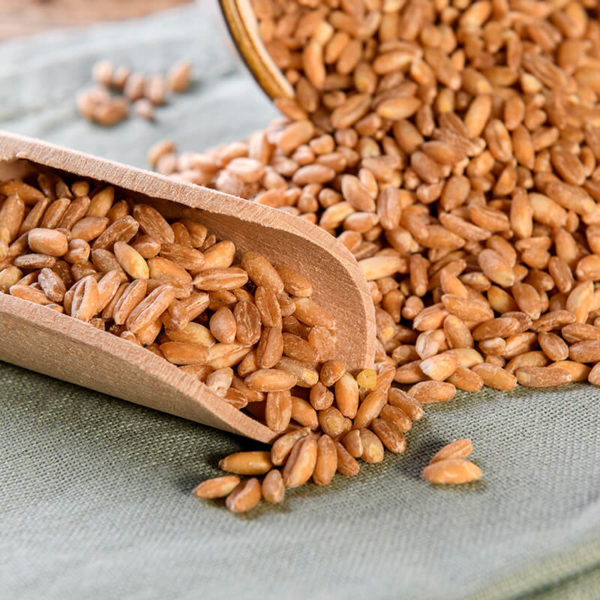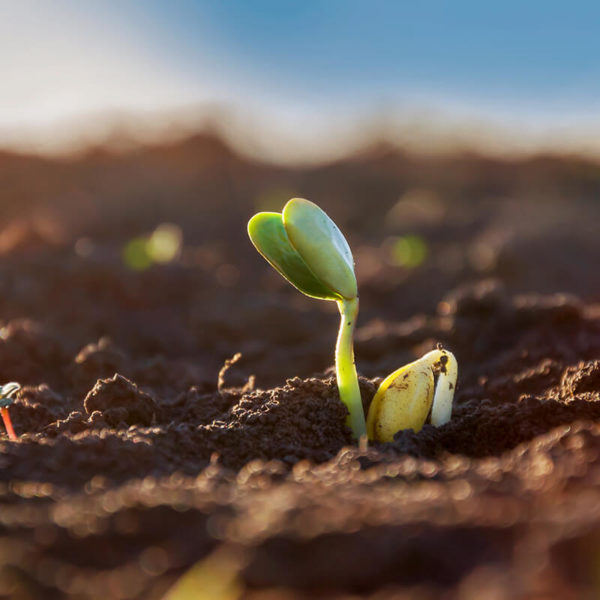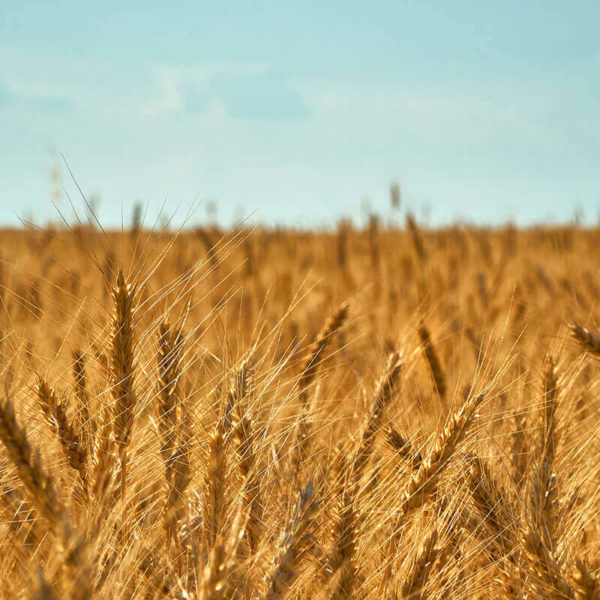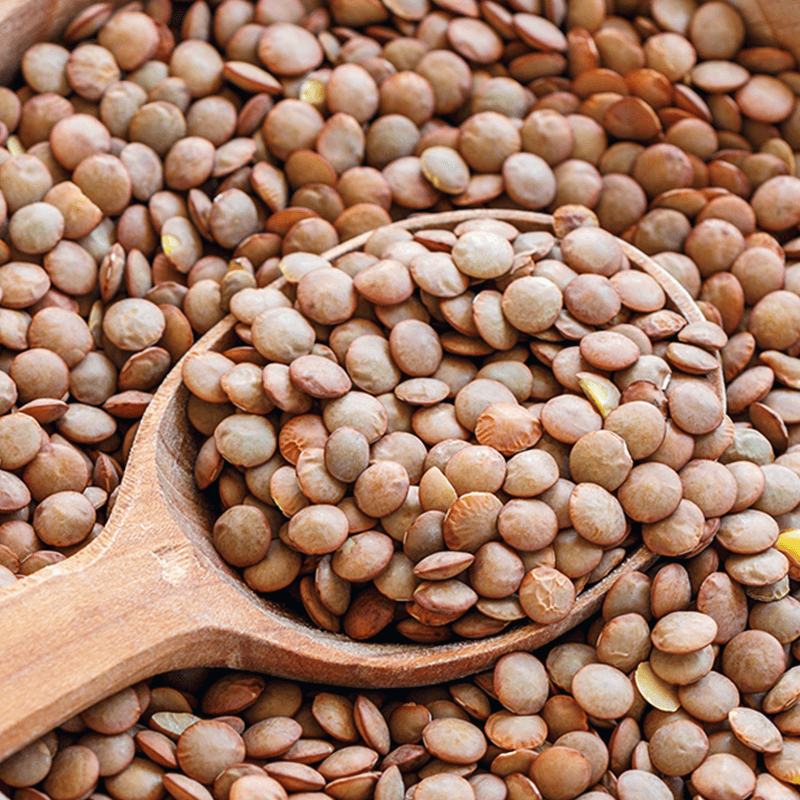
Lentils: PROPERTIES, BENEFITS, TYPES and CHARACTERISTICS
Lentils are the seeds of a plant belonging to the legume family; they are a very old pulse, once considered “the meat of the poor” due to their high iron and protein content compared to other plant-based foods. Versatile, low in fat and extremely nutritious, they are the very first pulses consumed as food, so much so that their use is even mentioned in the Bible.
Among the foods increasingly consumed by man, they owe their name to their particular “lens” shape, being also similar in shape to a coin, and they are traditionally eaten on New Year’s Eve as a symbol of fortune and prosperity. A food that for its many beneficial properties shouldn’t just be eaten on the Holidays, but rather, be part of a regular healthy and balanced diet.
The plant and the production
In botany, the lentil plant is called Ervum Lens, a dicotyledon belonging to the family of Leguminosae or Papillonate, a plant species cultivated today in all areas with a temperate climate. It is a plant with very low branches and sparse roots that do not penetrate deep into the soil, and therefore cannot be cultivated in areas that are too exposed to the weather. It has alternate leaves that resemble barbs of a feather and white flowers with nuances of pink and light blue, while the fruits consist of flat pods, containing one or two seeds.
Lentil seeds are the pulse itself, they are the part of the plant that is commonly consumed and can vary in size and colour, turning from light green to brown, from orange to yellow. They are harvested between June and July, when the pod begins to yellow. Lentils are available in supermarkets throughout the year, since they are consumed mostly after drying or already boiled.[1]
Cultivated in several countries around the world, as well as in southern and eastern Europe (such as Italy, Greece and Cyprus), lentils are produced in Asia Minor, Central Asia and the Near East, Canada and Australia. In Italy, lentils are present in almost all regions, but they are traditionally cultivated in Sicily, Abruzzo and Umbria.
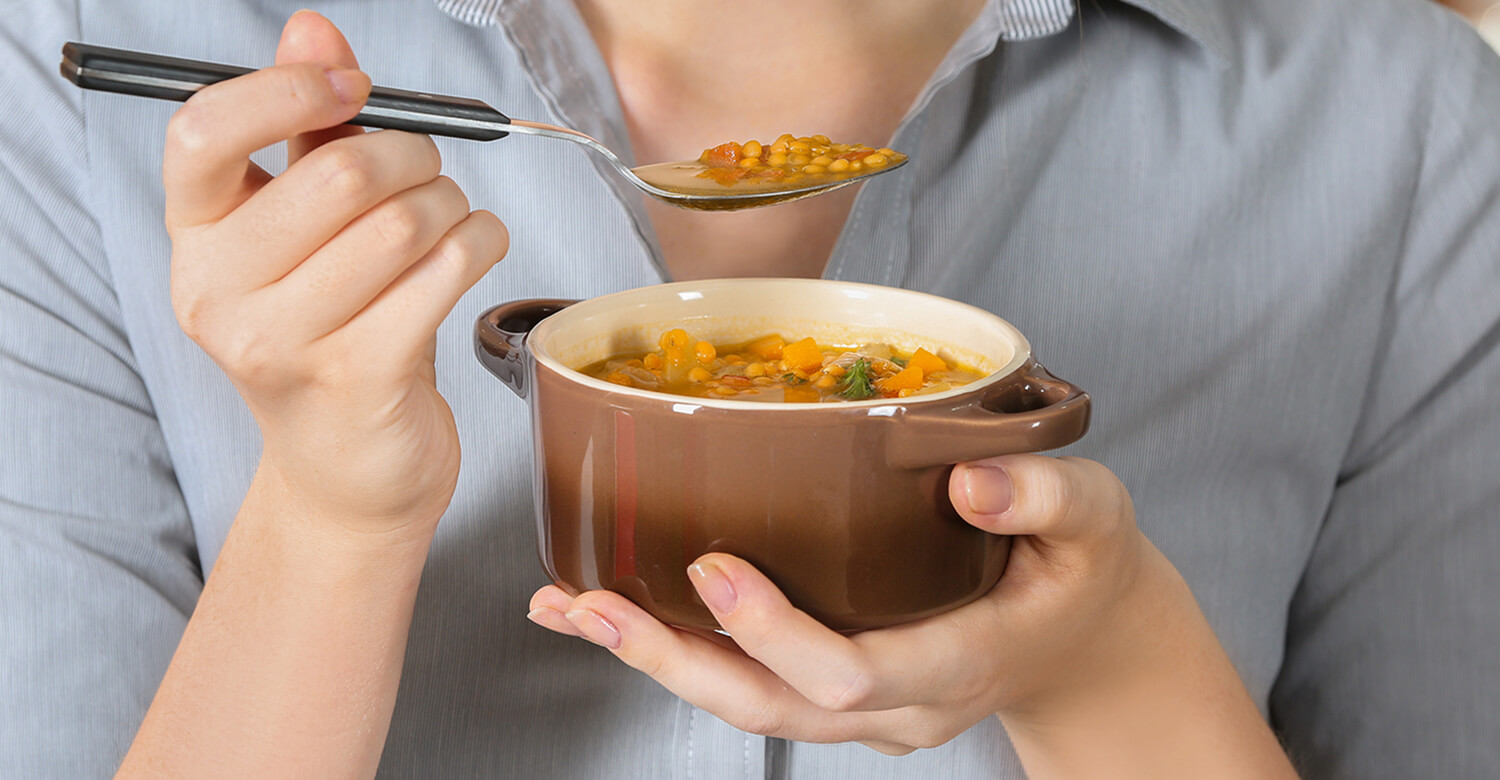
Properties of lentils
Lentils are a good source of protein, fibre and complex carbohydrates, but they also contain several minerals, such as potassium, iron and phosphorus, and they provide an important supply of vitamins B1 and B3. Very nutritious and energetic, they are also low in calories: as with other pulses, the calories of lentils are about 352 per 100 grams of food. Keep in mind that many of these nutrients are in their peel: peeled lentils (i.e. deprived of the outer peel), although easier to digest, contain less fibre.
They are composed for the most part of carbohydrates (about 63% of their weight), and especially starch (50% of the total caloric content), most of which contains amylose – a “slow-release” substance causing a more gradual increase in blood sugar levels. Lentils are also characterised by their excellent protein content, a characteristic that makes them suitable for those who follow a flexitarian, vegetarian or vegan diet. Keep in mind, however, that the proteins contained in lentils are considered “of medium biological value”, as they do not contain all the essential amino acids for our body: a limit that can be easily overcome by combining lentils with grains.[2]
NUTRITIONAL VALUE FOR 100 G OF LENTILS:
Water 8.26 g
kcal 352
Protein 24.63 g
Fat 1.06 g
of which saturated 0.154 g
Carbohydrates 63.35 g
of which sugars 2.03 g
Fibre 10.7 g
Potassium 677 mg
Phosphorus 281 mg
Magnesium 47 mg
Vitamin C 4.5 mg
Vitamin B3 2.605 mg
Folate (Vit. B9) 478 µg
Glycaemic index 32
Cholesterol 0 g
(source: USDA)
The benefits of lentils on our health[3]
Their good nutritional value, combined with their low calorie content, makes lentils an indispensable food in a balanced and healthy diet. These advantages are supported by numerous studies, which have highlighted the beneficial properties of this pulse especially for the health of the heart and the digestive system, reiterating its protective function also against some chronic diseases such as diabetes.
Here are some benefits of lentils in detail:
- They support the digestive system
The consumption of lentils helps to prevent disorders and diseases of the entire digestive system. This is thanks to prebiotics (or prebiotic fibres) that support digestive function and keep the intestinal microbiota healthy. As fibre-rich foods, lentils also reduce the risk of colorectal cancer. - They help keep the heart healthy
Potassium, folate and fibre support heart health by regulating blood pressure and cholesterol levels. Iron and vitamin B1 help the heartbeat stay constant, while phenols act as cardio-protectors, reducing the risk of several cardiovascular diseases. - They reduce the risk of diabetes
Thanks to theirlow glycaemic index (GI), an important indicator of blood sugar, lentils play a fundamental role in the fight against diabetes. Their energy is in fact released slowly into the bloodstream, resulting in a positive effect on blood sugar management.
- They fight free radicals
Lentils contain isoflavones, compounds with known antioxidant properties, useful for fighting free radicals responsible for cellular oxidation and aging. - They promote memory and concentration
Thanks to vitamin B1, the consumption of lentils promotes memory and concentration, while vitamin B3 (or vitamin PP) helps the body manage energy optimally.
There are very few contraindications to lentils, but some people have difficulties digesting them, even though they are still more digestible than beans and chickpeas. Mostly, they are not indicated for people suffering from hyperuricemia or gout due to their content of purines (nucleic acids that are produced by the body and come from food); those who suffer from this disease could accumulate purines in the joints.
Can lentils be eaten by people with celiac disease?
The answer is yes because, as with all pulses, they are naturally gluten-free. However, during the production and packaging of this type of product, contamination with grains containing gluten, such as barley, is possible even though rare.
Thanks to packaged lines and verification analysis on each production batch, we at Pedon guarantee that there are no traces of gluten throughout their journey, from the field to your table: this is the case for I Pronti Pedon lentils and the dried and gluten free peeled red lentils from our Dalla Buona Terra range.
Types of lentils: how many varieties are there?
The properties of lentils can vary depending on the type – here are the main varieties of lentils currently on the market:
- Green lentils – They are large and one of the most widespread and exported varieties in the world. Canada is the main producer. Fleshy and with a delicate taste, they do not need soaking, they cook in about twenty minutes and are suitable for pulse salads and dry side dishes.
- Red lentils – Also known as “Egyptian lentils”, they are distinguished by their very small size and their reddish-orangey colour. They are peeled and therefore more easily digestible, and they cook in a few minutes. They are the main ingredient in the traditional Indian dish dahl, and they give a creamy texture to soups and pureed soups.
- Black lentils (called Beluga) – With a shiny black colour, such as the fine Beluga caviar from which they take their name, they are native to India. They are flat and have a sweet and aromatic flavour; they are perfect for fish-based dishes and in soups and appetizers. They cook in about 20 minutes and do not need soaking.
- Yellow lentils – Similar to red lentils, yellow lentils are large peeled lentils. They cook in about 15-20 minutes and are perfect in soups or as a base for vegetable meatballs and flat breads.
- Brown lentils – The most common variety of all, they maintain their shape well and, unlike green lentils, which are similar, they have a more delicate and earthy flavour. Used in a wide variety of dishes, they are excellent on their own, accompanied with grilled vegetables or used for homemade vegetable burgers.
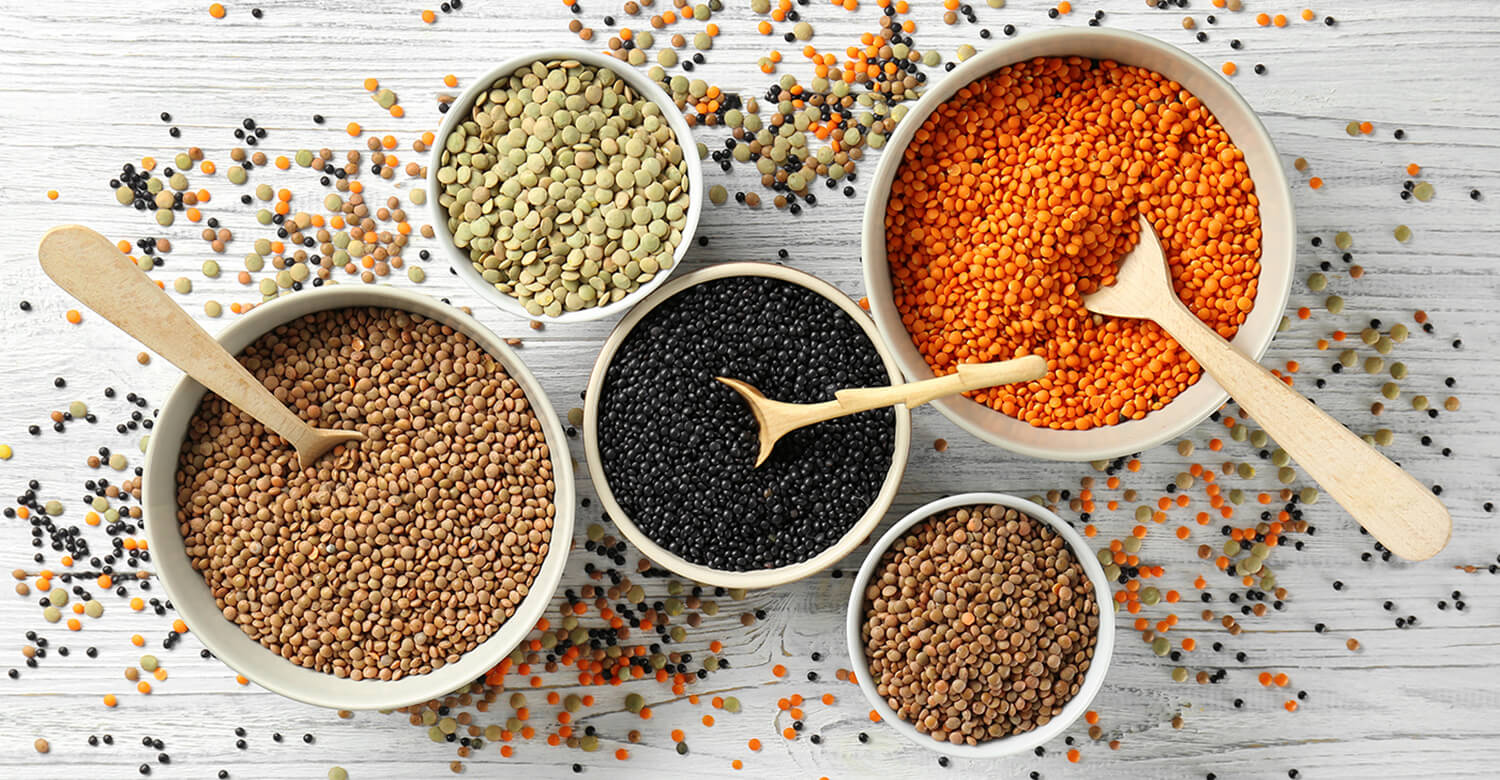
Italian lentils: which are the best?
Lentils come in many varieties, differing in size, colour and peculiar characteristics. Here are some of the best ones available in Italy:
- Castelluccio di Norcia lentils – They are small, round and grown in the karst plains of Castelluccio, within the Sibillini Mountains National Park in Umbria. They have a thin and tender peel, an intense taste and a striped colour that varies from green to brownish.
- Onano lentils – They come from the volcanic soils in the province of Viterbo and are also known as the “lentils of the Popes”. They have a very delicate and sweet taste, are striped and light brown and a have a creamy texture.
- Green lentils from Altamura – They are part of the national list of traditional agri-food products and are recognised as PGI. They are also called “giant lentils” as they are larger than brown lentils; they come from Bari, in Puglia, and are dark green in colour.
- Villalba lentils – From the province of Caltanissetta, they are also known as “blonde lentils” and they are the largest variety in Italy. They have a remarkable amount of iron and protein.
In which form are lentils available?
Lentils are available in various formats and can be found dried or pre-cooked, made into burgers, lentil snacks, consumed as sprouts or used as flour.
These are the characteristics of the most popular formats:
- Dry lentils: it is the most common format and is sold in bags or unpackaged. Dried lentils are the fastest to cook – they take about 15 minutes to become soft – and are ideal for making soups, stews and several other dishes.
- Ready-to-use lentils: lentils that have already been cooked and are ready to be eaten are the most loved pulses by consumers, as they are much more practical and quick to prepare. In this case, we distinguish between lentils that are boiled in water and then stored in glass or tin and steamed lentils, without preservatives and with the sole addition of a drizzle of oil. Like the I Pronti lentils by Pedon: practical thanks to the “open and eat” packages without the need to drain, they are microwaveable and easy to carry around.
- Lentil sprouts: rich in vitamin C, the sprouted seeds of the lentil plant have extraordinary beneficial and nutritional properties and can be consumed alone or in combination with other ingredients.
- Snack lentils: excellent for snacking alone or as an additional ingredient in salads, snack lentils are a modern and innovative format that encourages the consumption of legumes even outside the main meals. Toasted, not fried and super crispy, those from the I legumi fatti a snack range by Pedon can be enjoyed in their natural version, with fruit, vegetables or flavoured.
- Lentil burgers: lentils are perfect for making burgers. Being softer than beans and chickpeas, they have a skin that blends very well with other ingredients when puréed.
- Lentil flour: it is a type of flour obtained by grinding lentils, a valid gluten-free alternative to wheat flour. It is used to prepare dishes such as baked goods, pasta and pancakes.
- Lentil pasta: on supermarket shelves, next to durum wheat pasta, you will also find lentil pasta, obtained by grinding red, green or yellow lentils. It has similar calories to durum wheat pasta, but it is different from a nutritional point of view as it contains more protein.
How to cook lentils
Versatile, cheap and easy to cook, lentils are a very popular ingredient in the kitchen for the preparation of tasty dishes and delicious recipes: from soups to meatballs, from pureed soups to stewed side dishes, from salads to pasta or rice first courses.
When it comes to preparing lentils, we distinguish between:
- Dried lentils — Unlike other pulses, dried lentils do not need to be soaked. Absorption cooking involves cooking them in a terracotta pan at a temperature that is not too high, with a quantity of water double their volume. More simply, you can put them in a pot where the water is already boiling and cook them as you would pasta or rice. To halve the cooking time, you can also use a pressure cooker.
- Ready-to-use cooked lentils — Bypassing all the above steps, ready-to-use cooked lentils require zero preparation time compared to dried lentils, and are the ideal choice for those who are super busy but do not intend to give up on their delicious flavour or their many beneficial properties. You need
I Pronti Pedon lentils: ready to be served, they can be eaten cold or heated in the microwave. They are available as is or accompanied by grains and other pulses, and they are perfect alone or as an addition to more elaborate recipes.
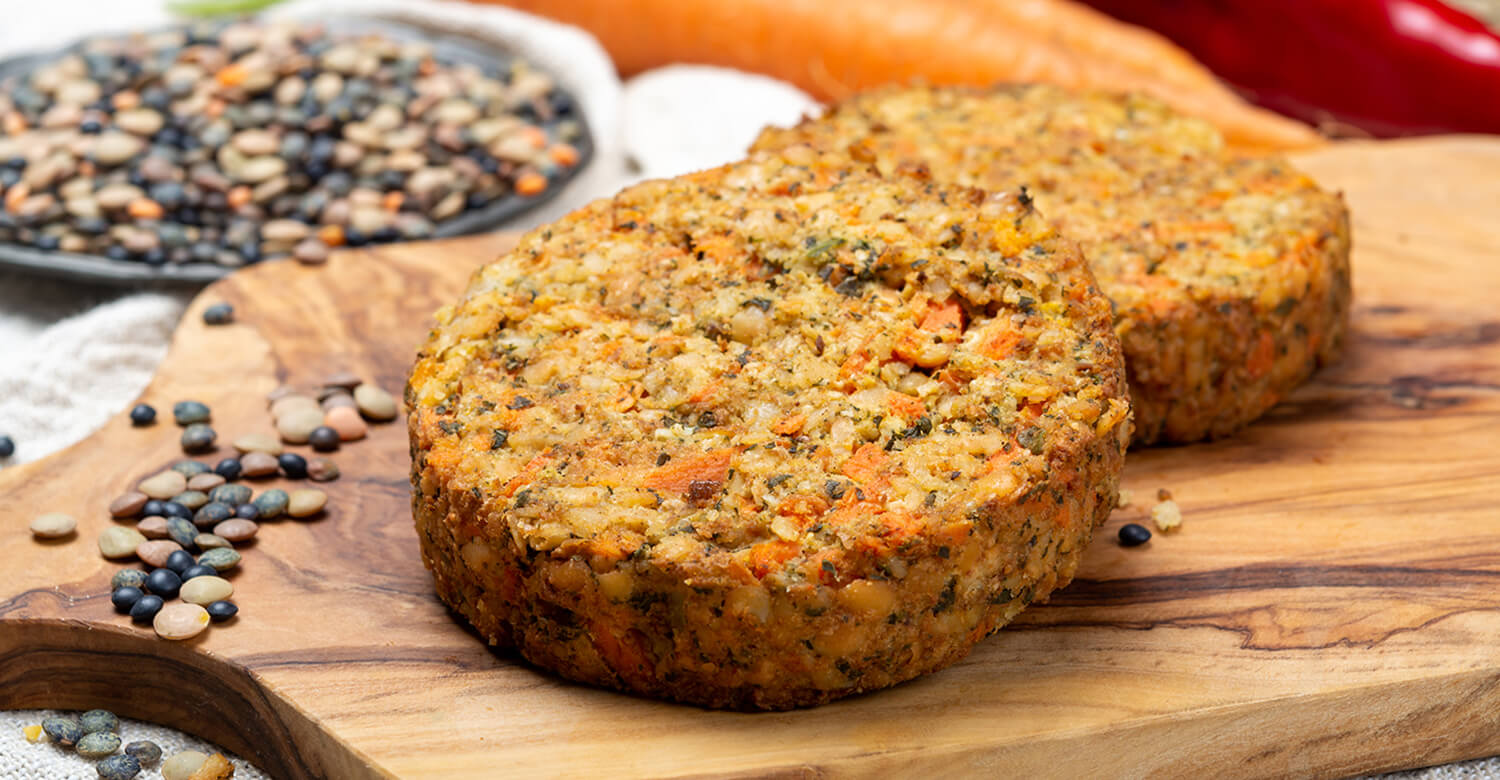
How to preserve lentils
When it comes to preserving lentils, you can proceed in the following way:
- For dried lentils — To store dried lentils, place them in an air-tight container and store them in a cool, dry place away from light. If stored in a damp place, they tend to absorb moisture and they risk becoming acidic.
- For ready-to-use lentils — Ready-to-use lentil packages can be naturally stored at room temperature until the expiration date.
- For cooked lentils — Lentils that have been cooked can be stored in the fridge after they have cooled completely. Place them in an air-tight plastic or glass container: they will retain their flavour, aroma and consistency up to a maximum of five days. Do you plan on eating them some other time? You can easily freeze them.
More info and interesting facts: The legend of LENTILS
FAQ (frequently asked questions)
- Do lentils contain gluten?
No, lentils are naturally gluten-free. However, visual inspection is recommended to make sure that there are no foreign grains that may have contaminated them, and we suggest you always read the label.
- Are lentils a protein food?
Yes, lentils are a food with an excellent protein content (about 24 g per 100 g).
- Are lentils suitable for a vegetarian or vegan diet?
Yes, as they are rich in vegetable proteins, thus compensating for the lack of animal proteins in a vegetarian and vegan diet.
- Are lentils fattening?
No, lentils aren’t fattening: if eaten in the right amount, they are suitable for a low-calorie diet.
- When lentils are not good
To understand if lentils are good, just soak them: if they come to the surface, it is better not to eat them!
Bibliography
- “Lentils”, HumanitasMedicalCare.it – portal of Humanitas Medical Care, the network of Medical Centres and Collection Centres of Humanitas, Source humanitas.it
- ”Lentils: small pulses with great properties” Viversano.net portal of food, cuisine and well-being – Dr. Alessandra Esposito, nutritionist biologist, Source viversano.net
- “Beneficial properties of lentils”, Insalute.it Unisalute Blog
(Italian Health Insurance) – advice and curiosities on health and well-being with the contribution of the Scientific Committee composed of doctors, scientists and researchers, Source blogunisalute.it

 Torna al menu
Torna al menu